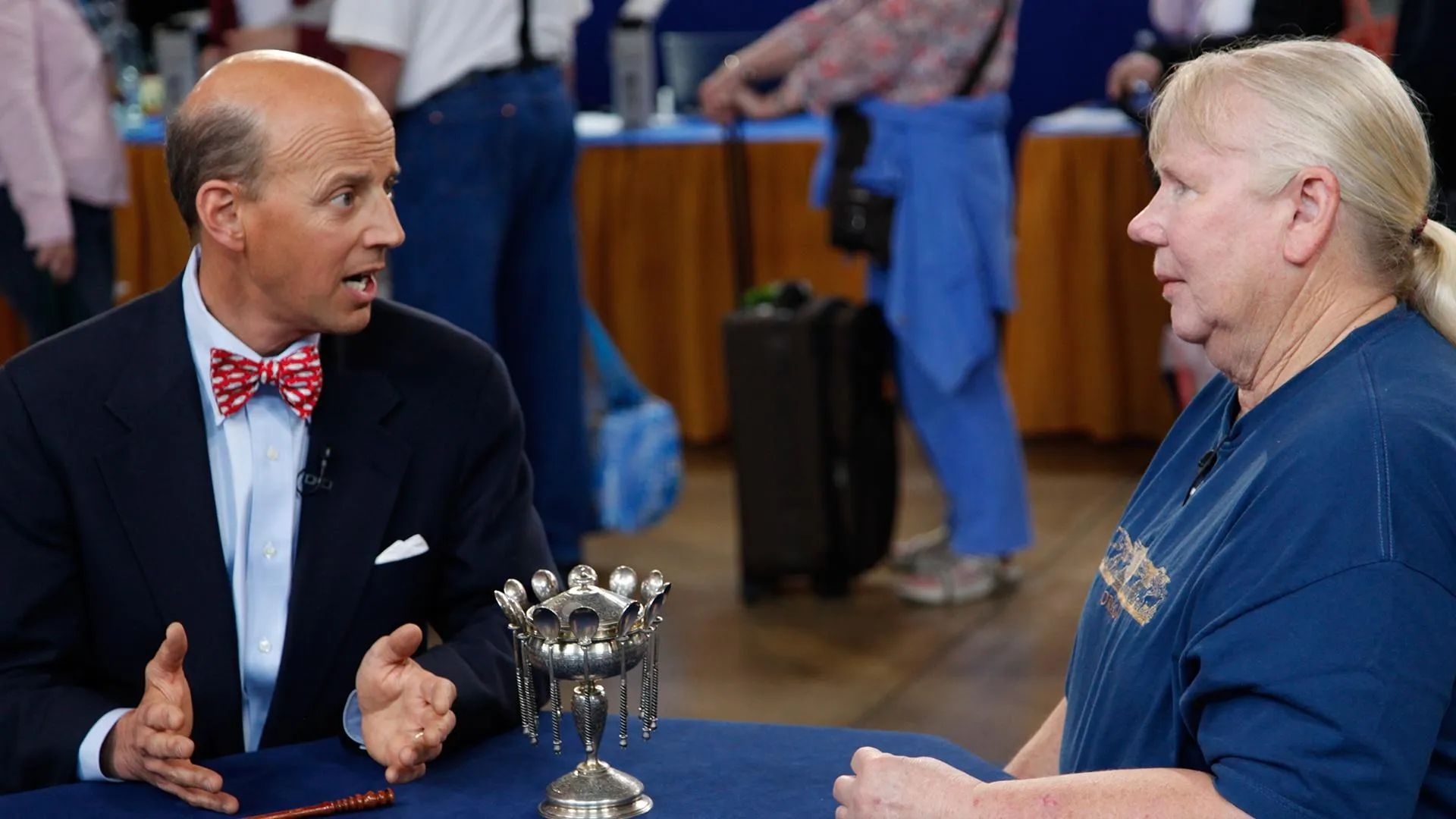GUEST: This is a caviar dish that was given to me for my birthday by a very dear family friend. It was gifted to her from her grandparents, and I don't know much about it, so I'm hoping that you can tell me a lot about it.
APPRAISER: It is a caviar dish. It's a covered caviar dish. And there are 12 spoons that go along with it. So, I'm intrigued by how complete it is. in remarkable condition. It is Russian. It was made in Moscow, it's 1884.
GUEST: Oh, wow. That's older than what I thought it would be.
APPRAISER: Each of the spoons is marked very clearly: "1884".
GUEST: Wow.
APPRAISER: Probably made for their own market, for the Russian market, although it could have been made for export as well. I don't see any export marks on it. I don't see any retail marks on it that tells me where it might have been retailed. This is sterling silver. And if we look inside the actual cup itself, we can see that it does have a gold sheen to it. Now, that gold is there so that when you put the caviar in, the saltiness of the caviar wouldn't tarnish the silver or ruin the silver. The other really fascinating thing about the quality is the technique that's used. Here you have two vignettes: one which is St. Basil's Cathedral...
GUEST: Yes.
APPRAISER: And one on this other side here, which is the Kremlin, both in Russian. These have a very black look to them. This is called "niello." N-I-E-L-L-O.
GUEST: How did they do that?
APPRAISER: They etch the design first, and then they rub a black ointment in, which is a combination of copper and silver and lead sulfites. And they rub that on and then it permanently gets into the etched design, and it makes it stand out beautifully. It really started back with the ancient Egyptians, and when we were doing excavations in the 18th and 19th century, we'd see metalwork that had that kind of design, and at that time the modern metalworkers would want to try to emulate that.
GUEST: I see. Is it the same thing on the back of the spoons? The same technique?
APPRAISER: Yes, all 12 spoons have a different cathedral etched right on to the back of them, which I think is absolutely remarkable. You can polish it; you can polish it lightly.
GUEST: Oh, it won't hurt the niello?
APPRAISER: It won't hurt the niello. I wouldn't do it too strenuously.
APPRAISER: You don't need to polish the inside, because that gold is just fine the way it is. I have a feeling that a retail price would probably be in the $12,500 range.
GUEST: Good grief. (laughing) That's wonderful, that's wonderful.



